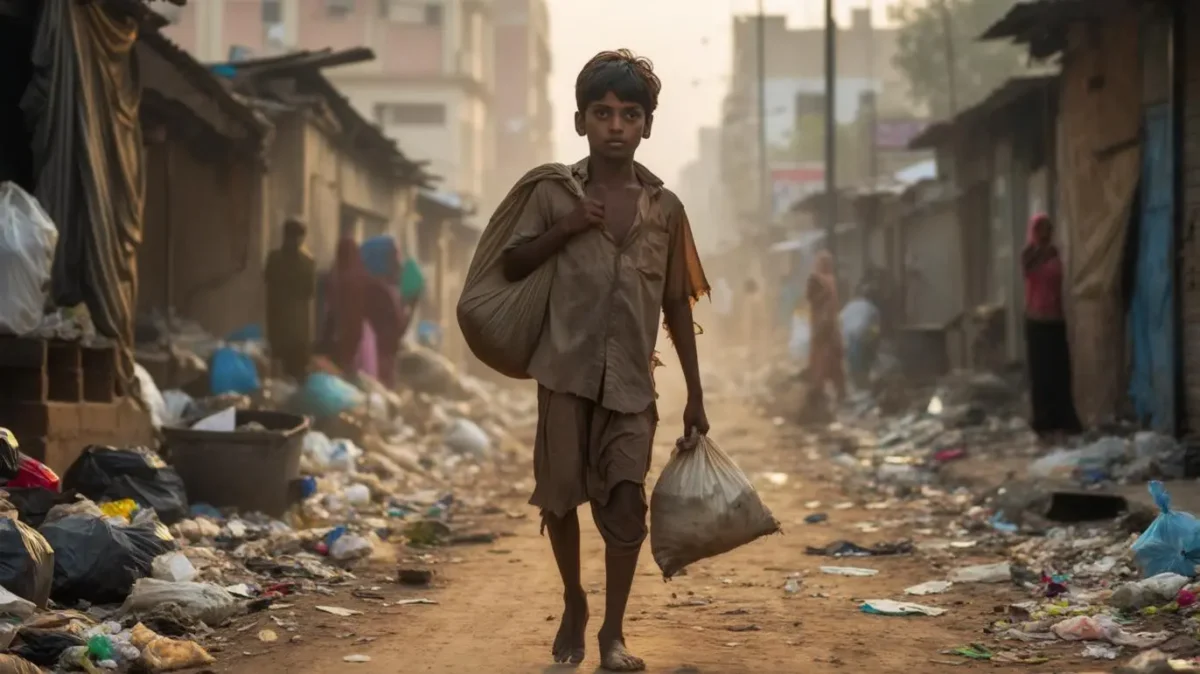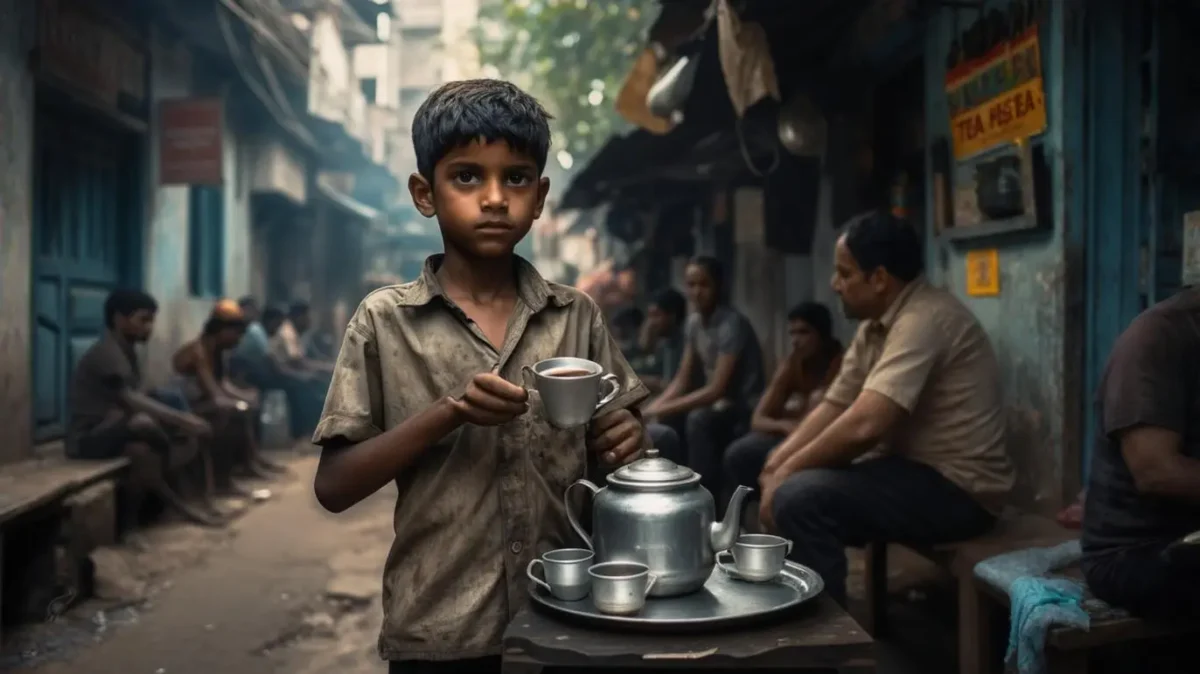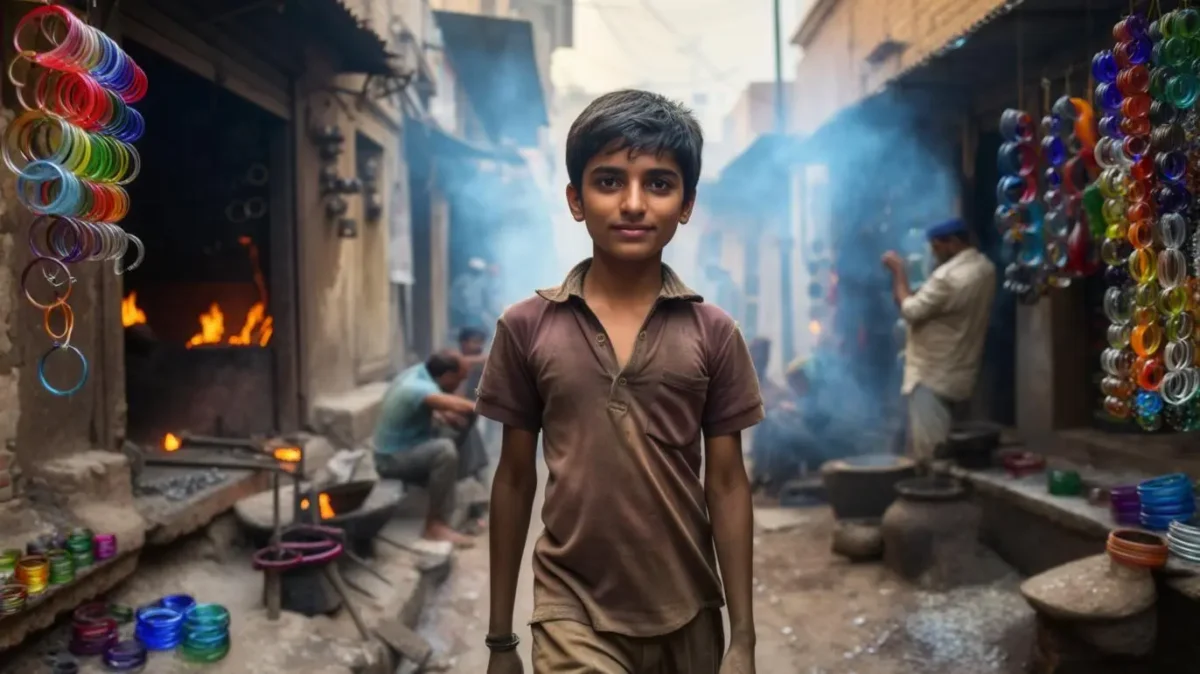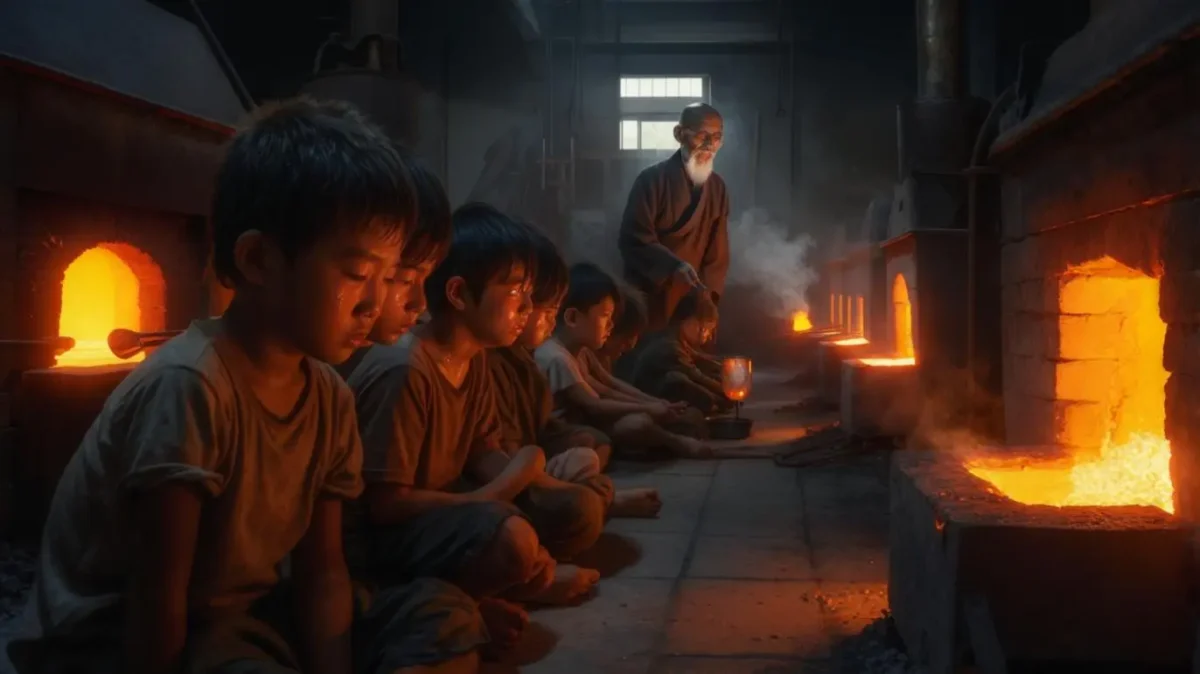It highlights themes of child labor, poverty, and societal barriers, key topics for HSLC 2026 exams, fostering critical thinking and empathy.
AHSEC Class 12 English Chapter 2: Lost Spring Summary Notes and Explanation 2025-26
AHSEC Class 12 English Chapter 2 – Lost Spring Summary Notes and Explanation | Full Guide
ইয়াত English Class 12 Chapter 2 Lost Spring Summary Notes and Explanation সহজ, সংক্ষিপ্ত আৰু স্পষ্ট ভাষাত দিয়া হৈছে। AHSEC ৰ পাঠ্যক্ৰমৰ আধাৰত প্ৰস্তুত কৰা এই Lost Spring summary notes ছাত্ৰ-ছাত্ৰীসকলৰ পৰীক্ষাৰ বাবে অতি সহায়ক হ'ব। Learn more about NCERT’s official content for Class 12 English.
These English Class 12 Chapter 2 Lost Spring summary notes explore Anees Jung’s vivid depiction of poverty, child labor, and shattered dreams. The chapter focuses on Saheb and Mukesh’s lives, clearly divided and explained with suitable analysis for AHSEC exam needs.
Our bilingual and focused Lost Spring Summary Notes and Explanation include theme-wise explanations, key questions, and vocabulary. These notes are designed for clarity, quick revision, and exam confidence. For background on child labor issues in India, refer to UNICEF India’s Child Protection page.
Whether you're preparing for AHSEC English exams or reviewing important topics, these English Class 12 Chapter 2 Lost Spring Summary Notes and Explanation will boost your understanding with structured guidance, summaries, and meaningful insights.
Explore Related Visuals




Lost Spring: Summary Notes
Table of Contents
English Summary
Lost Spring: Stories of Stolen Childhood by Anees Jung portrays the harsh truth of the lives of Indian child laborers through the eyes of Saheb and Mukesh, both young, and both with their individual dreams that do not materialize. This chapter is presented in two sections, each depicting the painful stories of the children held captive in the grip of poverty, society, and culture.
Saheb’s Story:
Saheb, a child from Seemapuri on the outskirts of Delhi, searches through garbage for discarded or broken items. He came from Dhaka when storms destroyed his family’s fields and home. Every day, he scrounges through garbage “looking for gold” (something valuable, like loose change).
When the author advises him to go to school, Saheb says there is no school near his home. When the author jokingly says she will open a school, Saheb takes it seriously, revealing his longing for education.
Saheb’s name, Saheb-e-Alam (lord of the universe), presents a stark contrast to his life. In Seemapuri, 10,000 ragpickers live in shanty homes without water, drainage, or electricity. For these people, who came from Bangladesh in 1971, survival is the main goal, not identity.
For children, garbage is “wrapped in wonder,” holding the desire to find something valuable. But for adults, it is merely a means of livelihood. Later, Saheb works at a tea shop, earning 800 rupees along with food, but he loses his free-spirited nature.
The steel tin in his hand feels heavier than the plastic bag, symbolizing his loss of freedom.
Mukesh’s Story:
Mukesh lives in Firozabad, the center of India’s glass bangle-making industry. Against traditional occupations, Mukesh wants to become a motor mechanic.
In Firozabad, families are engaged in bangle-making, where children also work in hazardous glass furnaces, often losing their eyesight. Mukesh’s family is trapped in this “web of poverty,” bound by family traditions that consider bangle-making their fate.
His grandmother calls it karam (destiny). Around 20,000 children work illegally in this industry. Middlemen, police, and bureaucrats keep this exploitation ongoing.
Mukesh’s dream is to learn to drive a car, but it seems like a “mirage.” His determination sets him apart from his family, even though they have accepted their fate.
Assamese Summary
লষ্ট স্প্ৰিং: ষ্ট’লেন চাইল্ডহুড নামৰ পাঠটোত এনিছ জং-এ দুজন শিশু ছাহেব আৰু মুকেশৰ কাহিনীৰ জৰিয়তে ভাৰতৰ দৰিদ্ৰতা আৰু শিশু শোষণ-নিপীড়নৰ কঠোৰ বাস্তৱতাক প্ৰকাশ কৰিছে। তেওঁলোকৰ সপোন দৰিদ্ৰতা আৰু সমাজৰ বাধাৰ দ্বাৰা দমিত হৈছে। এই পাঠটো দুটা ভাগত বিভক্ত।
ছাহেবৰ কাহিনী:
ছাহেব, দিল্লীৰ উপকণ্ঠৰ ছিমাপুৰীৰ এজন আৱৰ্জনাৰ মাজত বটল, ভগা-চিগা বস্তু বিচাৰি ফুৰা শিশু। যি ঢাকাৰ পৰা আহিছিল, যেতিয়া ধুমুহাই তাৰ পৰিয়ালৰ পথাৰ আৰু ঘৰ ধ্বংস কৰিছিল।
সি প্ৰতিদিনে আৱৰ্জনাৰ মাজত “সোণৰ সন্ধান” (মূল্যৱান কিবা বস্তু, যেনে খুচুৰা পইচা) কৰে। যেতিয়া লেখিকাই তেওঁক স্কুললৈ যাবলৈ পৰামৰ্শ দিয়ে, তেতিয়া ছাহেবে কয় যে তেওঁৰ ঘৰৰ ওচৰত স্কুল নাই।
লেখিকাই ধেমালিতে স্কুল খুলিম বুলি ক'লে ছাহেবে গুৰুত্বসহকাৰে সেইটো বিশ্বাস কৰে, যিয়ে তাৰ শিক্ষাৰ প্ৰতি থকা আকাংক্ষাক দেখুৱায়।
ছাহেবৰ নাম ছাহেব-ই-আলম (বিশ্বব্ৰহ্মাণ্ডৰ প্ৰভু) তেওঁৰ জীৱনটোৱে নামৰ সৈতে বিপৰীত ছবি এখন দেখুৱাই। ছিমাপুৰীত ১০,০০০ জন বটল বিচৰা ল'ৰা ছোৱালী জুপুৰি ঘৰত থাকে। য’ত পানী, নলা বা বিদ্যুৎৰ ব্যৱস্থা নাই।
১৯৭১ চনত বাংলাদেশৰ পৰা অহা এই লোকসকলৰ বাবে জীয়াই থকাটোৱেই মুখ্য উদ্দেশ্য, পৰিচয় নহয়। শিশুসকলৰ বাবে আৱৰ্জনাবোৰ “আশ্চৰ্য্যৰে মেৰিয়াই থোৱা,” বস্তু য'ত কিবা মূল্যবান বস্তু পোৱাৰ বাসনা পুহি ৰাখে। কিন্তু প্ৰাপ্তবয়স্কসকলৰ বাবে ই কেৱল জীৱিকাৰ পথ।
এনেদৰে পাছলৈ ছাহেবে এখন চাহৰ দোকানত কাম কৰে য'ত ৮০০ টকা দৰমহাৰ সৈতে খাদ্য খাবলৈ পায়। কিন্তু তেওঁৰ মুক্তভাৱে থকাৰ স্বাধীনতা হেৰাই যায়। তাৰ হাতত থকা ষ্টীলৰ টিনটো প্লাষ্টিকৰ বেগতকৈ ভাৰী, যিয়ে তেওঁৰ স্বাধীনতা হেৰুওৱাৰ প্ৰতীক হিচাপে চিহ্নিত হৈছে।
মুকেশৰ কাহিনী:
মুকেশৰ ঘৰ ফিৰোজাবাদত। ই হৈছে ভাৰতৰ কাঁচৰ খাৰু নিৰ্মাণ কৰা উদ্যোগৰ কেন্দ্ৰ। গতানুগতিক বৃত্তিৰ বিপৰীতে মুকেশ এজন মটৰ মেকানিক হ’ব বিচাৰে।
ফিৰোজাবাদত পৰিয়ালসমূহে খাৰু নিৰ্মাণত জড়িত। য’ত শিশুসকলেও বিপজ্জনক কাঁচৰ ভাটিত কাম কৰে যাৰ ফলত প্ৰায়ে দৃষ্টিশক্তি হেৰুৱায়।
মুকেশৰ পৰিয়ালো এই “দৰিদ্ৰতাৰ জাল”ত আৱদ্ধ। পৰিয়ালৰ পৰম্পৰাৰ দ্বাৰা বান্ধ খাই খাৰু নিৰ্মাণক তেওঁলোকে নিজৰ ভাগ্য বুলি মানি লয়। তাৰ আইতাকে ইয়াক কৰম (ভাগ্য) বুলি মানে।
২০,০০০ শিশুৱে অবৈধভাৱে এই উদ্যোগত কাম কৰে। মধ্যস্থতাকাৰী, পুলিচ, আৰু আমোলাসকলে শোষণৰ বাবে এই কাৰ্যবোৰ চলাই ৰাখে। মুকেশৰ সপোন গাড়ী চলোৱা শিকাৰ কিন্তু সেয়া যেন “মৰীচিকা”ৰ দৰে হৈ পৰিছে।
তাৰ দৃঢ়তা তাৰ পৰিয়ালৰ পৰা পৃথক যদিও সি ভাগ্যক মানি লৈছে।
Vocabulary and Meanings
| Word/Phrase | English Meaning | Assamese Meaning |
|---|---|---|
| Looking for | Searching or seeking something | বিচৰা |
| Slog their daylight hours | Work hard for long hours during the day | দিনৰ ভাগত কঠোৰ পৰিশ্ৰম কৰা |
| Roof over his head | A place to live; shelter | মূৰৰ ওপৰত এখন চালি/ বাসস্থান |
| Perpetual state of poverty | Continuous condition of being poor | নিৰন্তৰ দৰিদ্ৰতাৰ অৱস্থা |
| Dark hutments | Small, dark, and poor-quality houses | এন্ধকাৰ জুপুৰি ঘৰ |
| Imposed the baggage on the child | Forced burdens or responsibilities on the child | শিশুৰ ওপৰত বোজা জাপি দিয়া |
| Scrounging | Searching or collecting things from waste | আৱৰ্জনাৰ পৰা বস্তু সংগ্ৰহ কৰা |
| Glibly | Speaking in a smooth but insincere way | বাকপটুতাৰে কথা কোৱা |
| Bleak | Hopeless, depressing, or grim | নিৰাশাজনক |
| Hovels | Small, miserable, and dilapidated dwellings | সৰু জৰাজীৰ্ণ ঘৰ |
| Primeval state | Primitive or basic living conditions | আদিম অৱস্থা |
| Karam | Fate or destiny | ভাগ্য |
| Mirage | An illusion, something unattainable | মৰীচিকা |
| Sahukars | Moneylenders who exploit the poor | মহাজন |
| Apathy | Lack of interest, concern, or enthusiasm | উদাসীনতা |
| Squatting | Living in a place illegally or without permission | অবৈধভাৱে বাস কৰা |
| Desolation | A state of emptiness, loneliness, or abandonment | শূন্যতা বা পৰিত্যক্ত অৱস্থা |
| Tattered | Torn, worn-out, or ragged (referring to clothes) | ফটা-ছিঙা (কাপোৰৰ ক্ষেত্ৰত) |
| Transit homes | Temporary shelters or homes | অস্থায়ী ঘৰ |
| Wrapped in wonder | Filled with a sense of excitement or fascination | আশ্চৰ্য্যৰে মেৰিয়াই থোৱা |
| Discoloured | Faded or stained, no longer clean or bright | বিবৰ্ণ, মলিন |
| Carefree | Free from worries or responsibilities | নিশ্চিন্ত, চিন্তামুক্ত |
| Vicious circle | A situation where one problem leads to another | দুষ্টচক্ৰ |
| Dingy | Dark, dirty, and gloomy | অপৰিচ্ছন্ন, অন্ধকাৰ |
| Furnaces | Ovens or enclosed structures for intense heat | চুলা |
| Welding | Joining materials (like glass) using heat | ঢালাই কৰা |
| Stinking lanes | Narrow streets that smell bad due to garbage or filth | দুৰ্গন্ধযুক্ত পথ |
| Bahu | Daughter-in-law | নতুন বোৱাৰী |
| Veil | A cloth covering the face or head | পৰ্দা |
| Impoverished | Extremely poor, lacking resources | দৰিদ্ৰ |
| God-given lineage | A family trade or occupation believed to be fated | ঈশ্বৰ প্ৰদত্ত বংশগত বৃত্তি |
| Unkempt | Untidy or neglected | অপৰিচ্ছন্ন, অমাৰ্জিত |
| Sanctity | Holiness or sacredness | পৱিত্ৰতা |
| Suhaag | The auspicious state of a married woman | মধুচন্দ্ৰিকা |
| Drained of joy | Completely lacking happiness or enthusiasm | আনন্দৰ পৰা বঞ্চিত |
| Mind-numbing | Extremely tedious or monotonous, dulling the mind | মনোবল নাইকীয়া কৰা |
| Spiral | A continuous worsening situation, like a downward cycle | ক্ৰমান্বয়ে বেয়া হোৱা অৱস্থা |
| Web of poverty | A complex network of factors trapping people in poverty | দৰিদ্ৰতাৰ জাল |
| Stigma | A mark of shame or disgrace associated with a group | কলঙ্ক, লাঞ্ছনা |
| Destitution | Extreme poverty with lack of basic necessities | চৰম দৰিদ্ৰতা |
| Drudgery | Hard, menial, or monotonous work | কঠোৰ আৰু নীৰস শ্ৰম |
| Exploitation | Taking unfair advantage of someone | শোষণ |
| Squalor | Dirty, miserable living conditions | দুৰ্বিষহ জীৱন |
| Resilience | Ability to recover from or adjust to difficulties | সহনশীলতা/স্থিতিস্থাপকতা |
| Downtrodden | Oppressed or treated unfairly, especially due to poverty | নিপীড়িত, বিশেষকৈ দৰিদ্ৰতাৰ বাবে |
| Meagre | Lacking in quantity or quality; insufficient | অপৰ্যাপ্ত, কম |
| Toil | Exhausting physical labor | কঠোৰ শাৰীৰিক পৰিশ্ৰম |
| Plight | A dangerous or difficult situation | দুৰ্দশা |
| Tenacity | Determination or persistence in the face of adversity | দৃঢ়তা |
| Initiative | The ability to take action | পদক্ষেপ লোৱা |
| Cooperative | A jointly owned enterprise | সমবায় |
| Bureaucrats | Government officials | চৰকাৰী বিষয়া |
| Metaphorically | Figuratively, not literally | ৰূপক অৰ্থত |
| Desolation | Emptiness, loneliness | নিৰ্জনতা |
Themes and Purpose
English
Theme: The central theme of Lost Spring is the portrayal of childhood lost due to poverty, exploitation, and societal barriers. The chapter reveals how the dreams and determination of children like Saheb and Mukesh are destroyed by the harsh realities of their environment. It highlights the selfish vicious cycle, family traditions, exploitative systems (middlemen, police, bureaucrats), and the lack of opportunities. The narrative shows the conflict between hope and despair through Saheb’s loss of freedom and Mukesh’s dream of breaking free from bangle-making.
Purpose: Through Lost Spring, Anees Jung seeks to unveil the harsh realities of exploited and neglected children in India, emphasizing child labor, lack of education, and traditional occupations. By narrating the personal stories of Saheb and Mukesh, she aims to evoke empathy among readers and create awareness about the inequalities prevailing in society. The chapter critiques unfulfilled promises and society’s indifferent nature, encouraging reflection on the necessity of change.
Key Points to Remember:
- The chapter presents two parallel stories highlighting child labor in different contexts.
- Saheb represents the urban ragpicker community, while Mukesh represents traditional artisan families.
- Both stories emphasize how poverty traps children in cycles of exploitation.
- The author uses rich literary devices to transform harsh realities into compelling narrative.
- The text calls for social awareness and reform regarding child labor.
- Education emerges as the key to breaking the cycle of poverty.
- The stories show how systemic issues prevent individual efforts to escape poverty.
Assamese
বিষয়বস্তু: লষ্ট স্প্ৰিংৰ মূল বিষয়বস্তু হৈছে দৰিদ্ৰতা, শোষণ, আৰু সামাজিক বাধাৰ ফলত হেৰুৱাই পেলোৱা শৈশৱৰ বৰ্ণনা। পাঠটোত ছাহেব আৰু মুকেশৰ দৰে শিশুৰ সপোন আৰু দৃঢ়তা সিহঁতৰ কঠোৰ পৰিৱেশৰ দ্বাৰা কেনেকৈ ধ্বংস হৈছে তাকে প্ৰকাশ কৰা হৈছে। স্বাৰ্থন্বেষী দুষ্টচক্ৰ, পৰিয়ালৰ পৰম্পৰা, শোষণকাৰী ব্যৱস্থা (মধ্যস্থতাকাৰী, পুলিচ, আমোলা), আৰু সুযোগৰ অভাৱৰ কথা উল্লেখ কৰা হৈছে। পাঠটোত ছাহেবৰ হেৰুৱাই পেলোৱা স্বাধীনতা আৰু মুকেশৰ খাৰু নিৰ্মাণৰ পৰা মুক্তিৰ সপোনৰ মাজত আশা আৰু নিৰাশাৰ সংঘাত দেখা যায়।
উদ্দেশ্য: এনিছ জং-এ Lost Spring পাঠটোত শিশুশ্ৰম, শিক্ষাৰ অভাৱ, আৰু পৰাম্পৰাগত বৃত্তিৰ ওপৰত গুৰুত্ব দি ভাৰতৰ শোষিত, উপেক্ষিত শিশুসকলৰ কঠোৰ বাস্তৱতাৰ ছবি প্ৰকাশ কৰিব বিচাৰিছে। ছাহেব আৰু মুকেশৰ ব্যক্তিগত কাহিনীৰ জৰিয়তে তেওঁ পাঠকৰ মাজত সহানুভূতি জাগ্ৰত কৰি সমাজত বৰ্তি থকা অসমতাৰ প্ৰতি সজাগতা সৃষ্টি কৰিব বিচাৰিছে। পাঠটোৱে অপূৰ্ণ প্ৰতিশ্ৰুতি আৰু সমাজৰ উদাসীন চৰিত্ৰক সমালোচনা কৰি পৰিৱৰ্তনৰ প্ৰয়োজনীয়তাৰ ওপৰত চিন্তা কৰিবলৈ উৎসাহিত কৰিছে।
মূল সাৰকথা:
- পাঠটোত দুটা সমান্তৰাল কাহিনীৰ জৰিয়তে বিভিন্ন পৰিপ্ৰেক্ষিতত শিশুশ্ৰমৰ আৰু শোষণৰ কথা উত্থাপন কৰা হৈছে।
- ছাহেবে চহৰত আৱৰ্জনা বিচৰা সম্প্ৰদায় এটা প্ৰতিনিধিত্ব কৰিছে, আনহাতে মুকেশে পৰম্পৰাগত বৃত্তিত জড়িত পৰিয়ালক প্ৰতিনিধিত্ব কৰিছে।
- দুয়োটা কাহিনীয়ে দৰিদ্ৰতাই শিশুসকলক কেনেকৈ শোষণৰ চক্ৰত আৱদ্ধ কৰি সোণালী শৈশৱক ধ্বংস কৰে সেয়া ফুটাই তুলিছে।
- পাঠটোৱে শিশুশ্ৰমৰ বিষয়ে সামাজিক সজাগতা আৰু সংস্কাৰৰ প্ৰতি আহ্বান জনায়।
- শিক্ষাক দৰিদ্ৰতাৰ চক্ৰ ভাঙি পেলোৱাৰ মুখ্য উপায় হিচাপে দেখুওৱা হৈছে।
- কাহিনীবোৰে ব্যক্তিগত প্ৰচেষ্টা, দৃঢ়তা, সপোনক বাধা দিয়া পদ্ধতিগত সমস্যাৰ কথা প্ৰকাশ কৰিছে।
Class 12 English Chapter 2 Lost Spring Summary FAQ
Why is Chapter 2 Lost Spring important for SEBA Class 12?
What are the key themes of Lost Spring?
The key themes include child labor, poverty, exploitation, loss of childhood, and the conflict between dreams and societal constraints.
How do the stories of Saheb and Mukesh reflect the chapter’s purpose?
Saheb and Mukesh’s stories illustrate the harsh realities of child labor and poverty, evoking empathy and highlighting the need for social reform.
How can students use these summary notes for HSLC 2026 preparation?
Students can use these notes to understand key themes, vocabulary, and character analyses, improving comprehension and exam performance.
What role does education play in Lost Spring?
Education is portrayed as a potential escape from poverty, though inaccessible to Saheb and Mukesh due to systemic barriers.

Mukut
B.Sc. | Content Writer | 10+ Years Teaching Experience
Specializing in Science and English curriculum for classes 6–12.
Founder of Hiddemy, an educational initiative of Hidden Gem Institute focused on
creating accessible learning resources.